Precocious Udder in Goats: Causes, Care, and What to Expect
Learn what a precocious udder is, why it happens, and how to manage it so your goats stay healthy and comfortable.
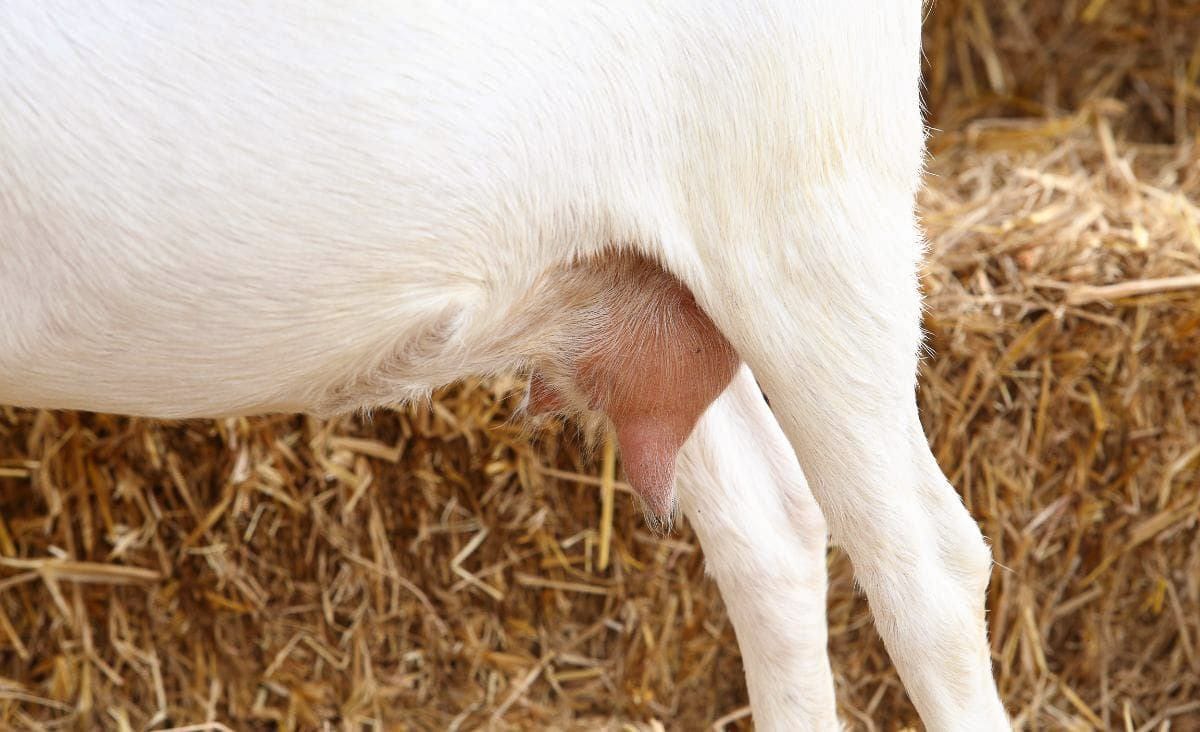
I’ll never forget the first time I walked into the barn and saw a young doeling (who had never even been bred) with a bagged-up udder that looked ready to burst. My first thought? “She must be pregnant.” My second thought? “But… how?!”
Goats will always find a way to keep you guessing. Just when you think you’ve seen it all, along comes something like a precocious udder. That’s what we call a precocious udder: when a doe bags up even though she’s not bred.
I’ll walk you through exactly what a precocious udder is, why it happens, what to watch out for, and how to manage it so your goat stays comfortable and healthy.
What Is a Precocious Udder?
A precocious udder is when a doe develops an udder without being pregnant or long before her due date if she is. It can happen to doelings that have never been bred, or to older does between pregnancies.
At first glance, it looks a lot like a pregnant udder: swollen, sometimes firm, and even making milk. The first time I saw it, I was convinced a surprise kidding was about to happen. The hard part is it looks a lot like mastitis or udder edema, which is exactly why most of us panic the first time we see it.
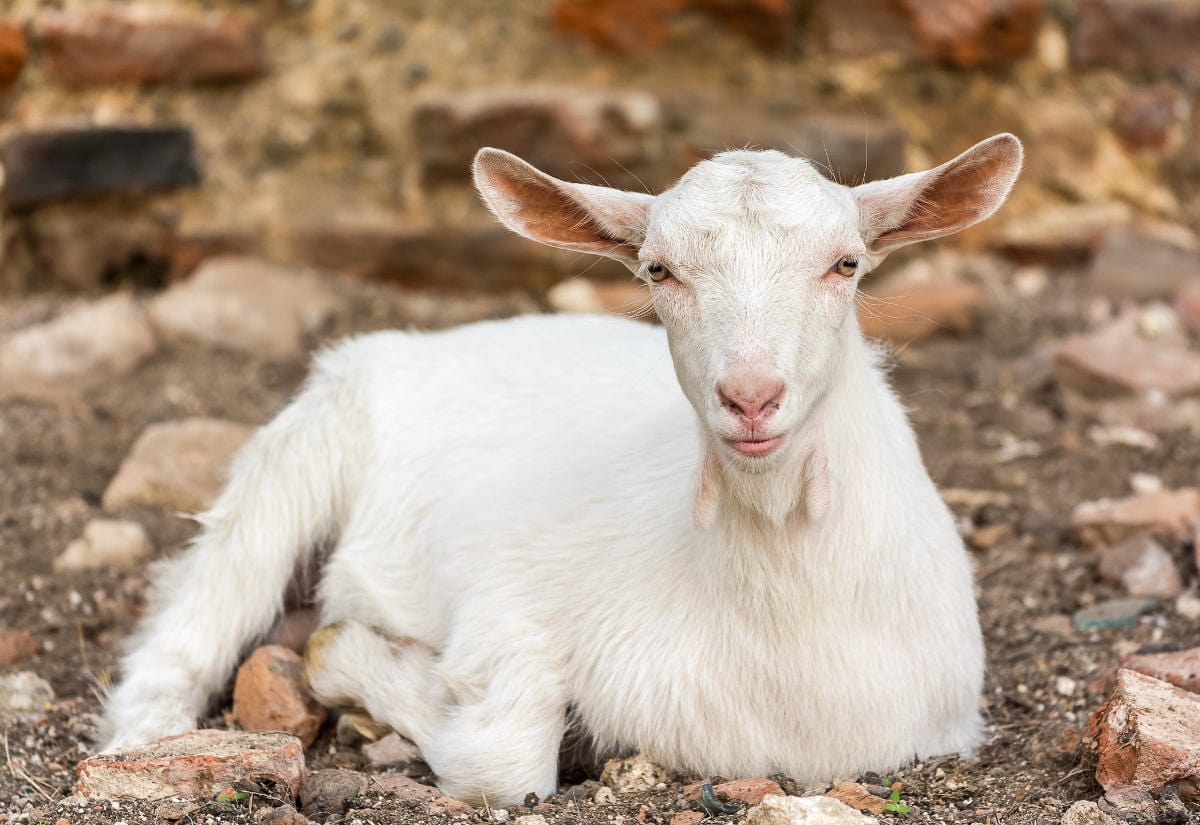
If you’re trying to sort out whether an udder means pregnancy or not, it helps to know the real signs. Here’s what to expect when your goat is pregnant and laboring.
Common Causes of a Precocious Udder
There isn’t just one culprit. Several things can set it off. Over the years, I’ve seen it linked to:
Hormonal Changes
A goat’s endocrine system is sensitive. Even small shifts in hormones can trigger udder development. Sometimes this happens for no obvious reason, especially in doelings. And honestly? Sometimes there’s no clear reason at all. Their body just decides to get weird about it.
Diet & Phytoestrogens
Rich feed or plants high in estrogen-like compounds (phytoestrogens) can push udders to develop early. Some common ones include:
- Alfalfa
- Red clover
- Soybeans
- Flaxseed
- Hops
I’ve noticed this more in doelings on rich pasture mixes heavy in clover. If you’re seeing this often in your herd, take a close look at what’s in their hay or pasture mix. Having a loose mineral out all the time helps too. It gives them a boost when pasture or hay isn’t quite cutting it.
Environmental Stressors
Anything from a sudden cold snap to spraying the wrong cleaner near their pen can mess with their system. Even little things like switching bedding brands can be enough to set them off.
Mistaken Identity
A swollen udder doesn’t always mean precocious. Mastitis or even a growth can look similar. That’s why ruling out infection with a vet is important.
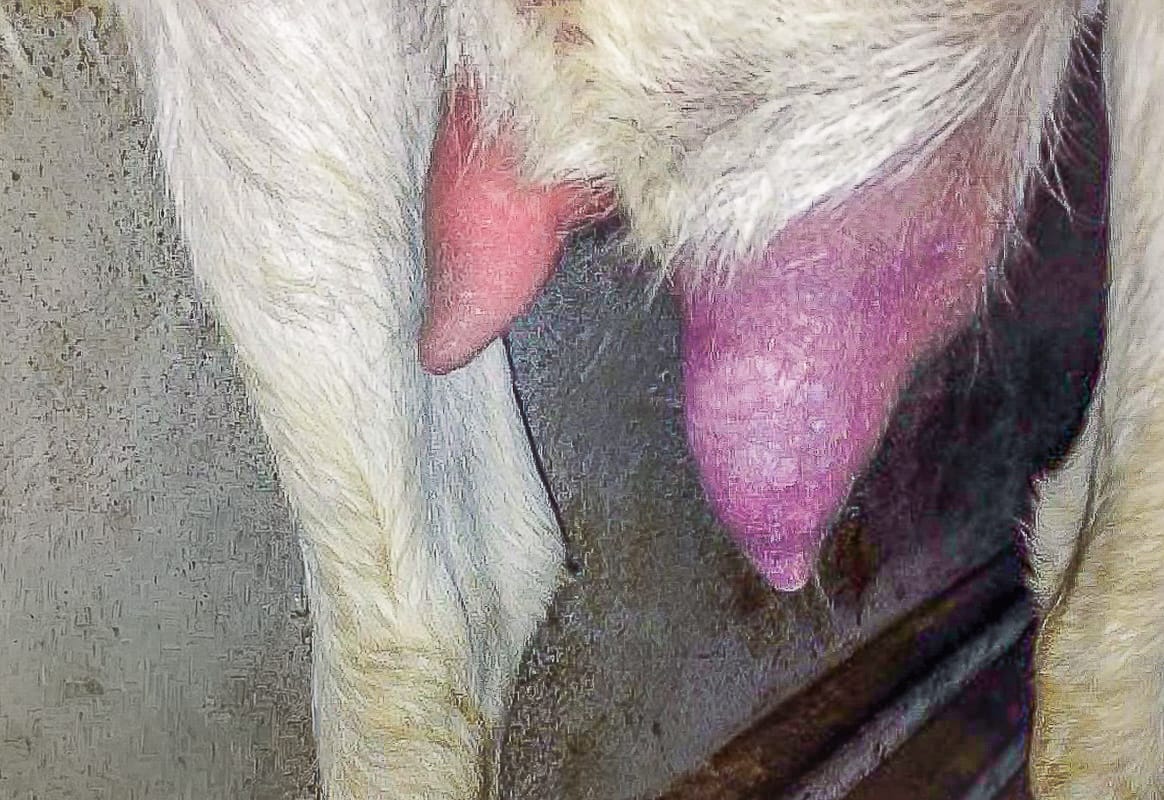
What to Do If Your Goat Develops a Precocious Udder
The first time this happened, I freaked a little. I was convinced something was horribly wrong. These days I recognize it for what it is (one of those goat things that looks dramatic, but usually isn’t) and I don’t go into panic mode anymore.
Confirm What You’re Dealing With
When in doubt, just call your vet. Better to feel silly for overreacting than to miss something important. Mastitis needs treatment, while a true precocious udder usually doesn’t. If you don’t have immediate vet access, a mentor can often help you decide whether it’s urgent.
Monitor Closely
Keep a daily eye on the udder:
- Is it growing quickly?
- Does it feel hot, hard, or lumpy?
- Is the goat acting uncomfortable, off feed, or lethargic?
Those are red flags that need veterinary attention.
Decide Whether to Milk
Here’s where goat people disagree. Some goat owners milk to relieve pressure and prevent mastitis; others leave it alone to avoid stimulating more production.
- If milk is leaking or the udder is uncomfortably full, gentle milking may be the kinder choice.
- If it’s small and soft, leaving it alone is usually fine.
If you’re still not sure how you feel about milking in general, I’ve shared my honest take on whether milking goats is really worth it. If you do milk, label and freeze the colostrum. It can be lifesaving for future kids.
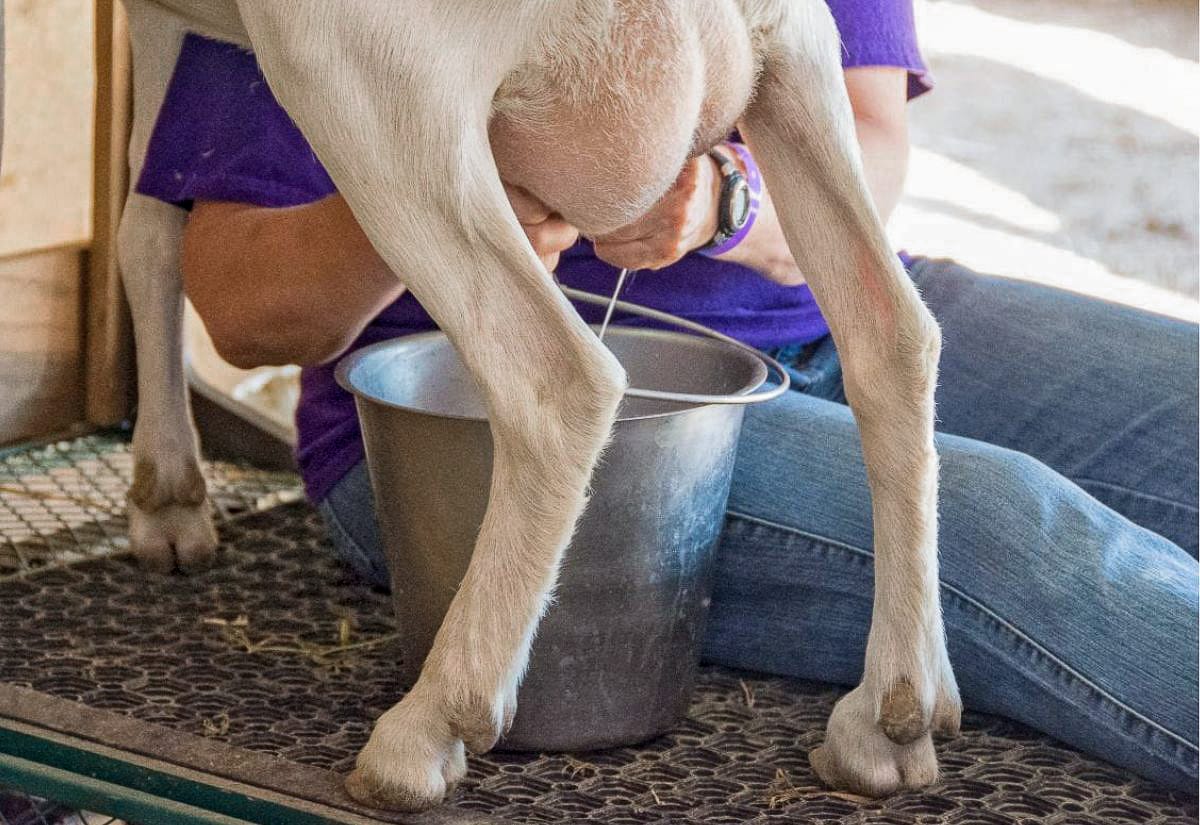
Adjust Diet if Needed
Cut back on high-phytoestrogen feeds (see list above). Make sure your doe’s diet is balanced without being overly rich.
Reduce Stress
Provide clean, comfortable housing, space to move, and avoid chemical sprays around your goats. Stress can make hormone imbalances worse.
Preventing Mastitis and Other Complications
The biggest risk with a precocious udder is mastitis. Here’s how to lower that risk:
- Keep bedding clean and dry.
- If you milk, do it hygienically (wash hands, sanitize equipment). My recipe for a simple homemade teat wash for goats and cows is one I use to cut down on mastitis risk.
- Watch for heat, redness, or foul-smelling milk. Those are infection signs. A strip cup doesn’t look like much, but it’s saved my herd more than once. You catch mastitis early instead of dealing with a full-blown mess.
Common Questions About Precocious Udders
Still scratching your head? These are the questions I get asked most often.
Pin this post to Pinterest so you’ll have it handy the next time a goat surprises you!
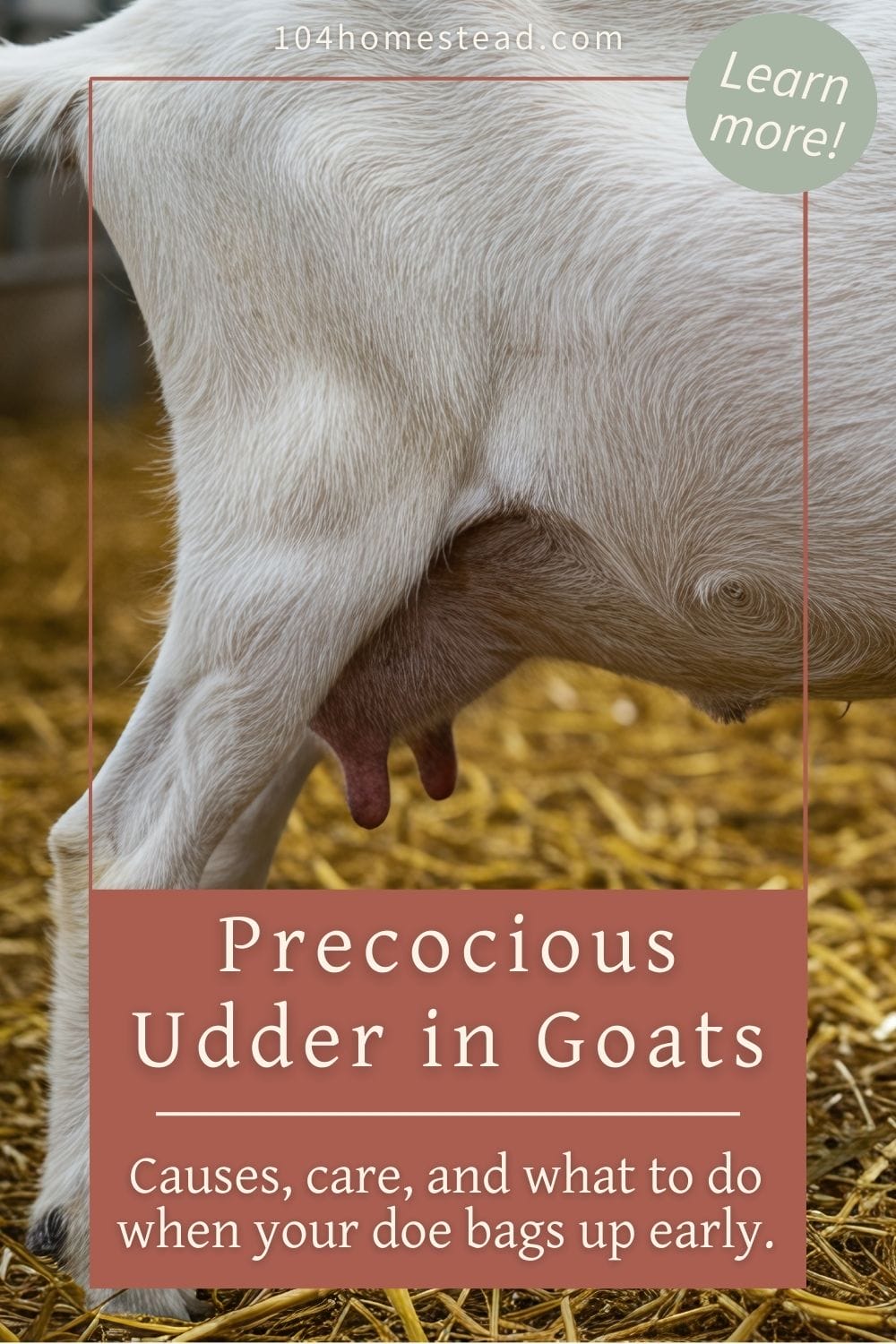
Precocious udders are one of those weird goat things that seem terrifying until you’ve seen it once. After that, you realize it’s manageable and not worth losing sleep over. The important part is keeping her comfortable, watching for mastitis, and remembering that this doesn’t mean she’s ruined for future breeding or milking. Most does go right on to raise kids and fill the bucket just fine.
And honestly, the first time is the hardest. After that, you’ll know what you’re looking at and what steps to take. If you’ve been through this yourself, share what worked (or what didn’t). The more real stories we swap, the less scary these odd goat surprises feel for everyone.
